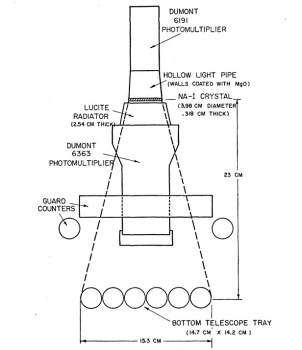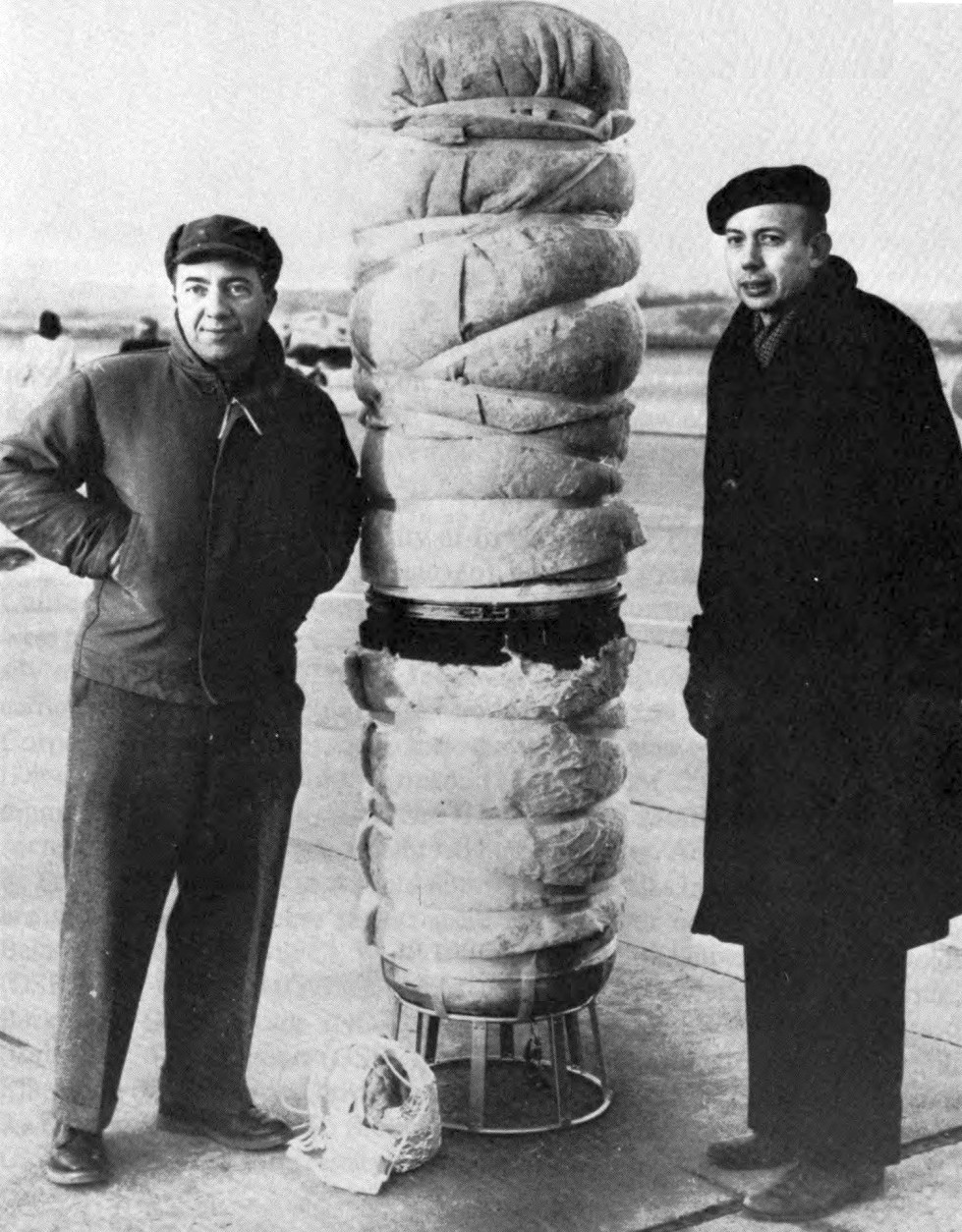Purpose of the flight and payload description
The payload was a combination of Cerenkov and scintillation detectors used to study spectral cutoffs as a function of latitude and to observe some aspects of temporal variations at high altitude of the alpha particles of the primary cosmic radiation.
The instrument which can be seen described in the scheme at left was a three-element telescope containing a crystal scintillation counter, a Lucite Cerenkov counter, and a Geiger counter tray. The scintillation crystal and the Geiger counter tray were the defining elements of the telescope. All these elements were enclosed in an airtight aluminum cylinder.
For each particle which traversed these elements, the outputs from the Cerenkov counter and the scintillation counter were recorded. A notation was also made when a telescope event was accompanied by the triggering of more than one counter in the tray or by one of the ring of guard counters. The data were recorded on a continuously moving film with an accurate time base superimposed. These data were then reduced by measuring for each event the pulse height from the scintillation counter and from the Cerenkov counter.
These measurements were recorded on a suitable two-dimensional data grid.
Details of the balloon flight
Balloon launched on: 3/13/1956 at 7:47 local
Launch site: Iowa City Municipal Airport, Iowa, US
Balloon launched by: Winzen Research Inc.
Balloon manufacturer/size/composition: Zero Pressure Balloon Winzen - 172.6 ft diameter
Balloon serial number: 172.6-150-V-19
Flight identification number: WRI 552
End of flight (L for landing time, W for last contact, otherwise termination time): 3/13/1956 at 15:45 local
Balloon flight duration (F: time at float only, otherwise total flight time in d:days / h:hours or m:minutes - ): ~ 8 h
Landing site: Near Mount Morris, New York, US
As additional loads in this flight were enclosed a geiger counter and a tiny radio transmitter to measure the total cosmic ray intensity, provided by Iowa University; an air pressure measuring device and photographic plates from physicists at the University of Minnesota, Washington University and a group of students from India.
External references
- Flight Summary Log Winzen Research Inc. report (1963)
- High Altitude Measurements of the Earth's Magnetic Field with a Proton Precession Magnetometer Journal of Geophysical Research, vol. 61, issue 3, pp. 547
- Proton Component of the Primary Cosmic Radiation Physical Review, vol. 115, Issue 1, pp. 194
- Skyhook balloon travels 700 miles The Daily Iowan, March 14, 1956
5803If you consider this website interesting or useful, you can help me to keep it up and running with a small donation to cover the operational costs. Just the equivalent of the price of a cup of coffee helps a lot.



